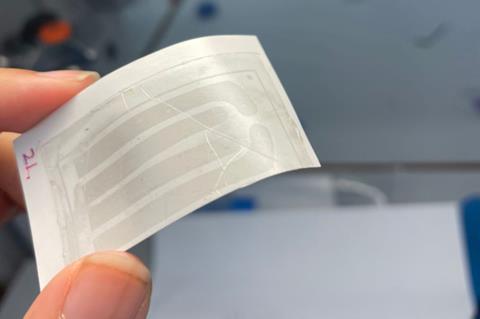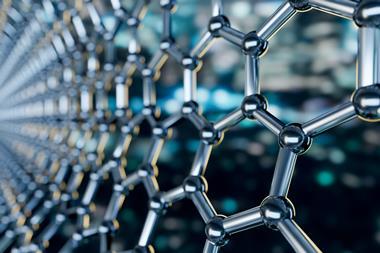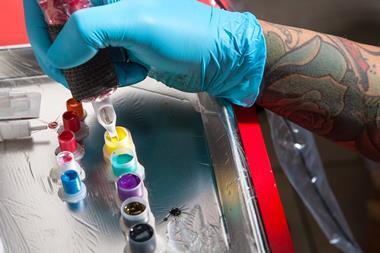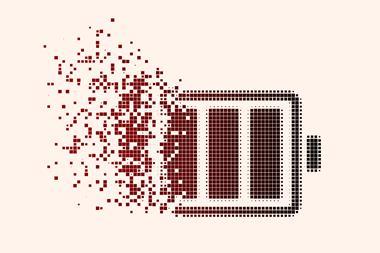
US researchers have developed the first cardiac implant made from graphene. The thinnest cardiac implant to date, the ‘graphene tattoo’ works like a conventional pacemaker – sensing heartbeat irregularities and then stimulating the heart to a more regular rhythm.
As the device is made of graphene, it is conductive, biocompatible and capable of being moulded to the soft, wet, dynamic muscle tissue of the heart. Also, as it is transparent, the team led by Igor Efimov – a biomedical engineering and medicine professor at Northwestern University in Illinois – was able to use light to track and modulate heart rhythm in their rodent study.
Conventional pacemakers and implanted defibrillators involve metal interfaces and require wires and hard, rigid materials that are not that well suited to the body. ‘Graphene has two properties, which we found really unique and also important for treatment of heart disease,’ Efimov tells Chemistry World. ‘First of all, it’s a material based on carbon, which is the basis of life, so it’s really safe, unlike for example, some metals which oxidise and cause various kinds of toxicity or … can form various subproducts which could be toxic.’ Secondly, he emphasises that carbon has a high conductivity and is also optically transparent, unlike traditional materials such as metals.
To create the pacemaker the researchers first encapsulated the graphene inside of a flexible, elastic silicone membrane. Next, they put 10µm gold tape on the outside to serve as an electrical interconnect between the graphene and the external electronics used to measure and stimulate the heart. The device was then placed onto the hearts of the rodents that they studied.
Once the graphene tattoo was implanted it was able to sense irregular heart rhythms and then restore a normal heartbeat by delivering electrical stimulation. The researchers were also able to use light to control the device and stimulate the heart, as well as record what was happening.
‘The authors have shown the efficacy of graphene sensors to modify electrical pulses in smooth muscle, particularly cardiac treatment,’ says James Tour, a synthetic organic chemist at Rice University in Texas, US, who was not involved in the study. ‘It obviously affects the calcium signaling, as the authors show, which is the mechanism for signal transduction in cardiomyocytes. That they have such level of control over a heart, leveraging few-layer graphene’s optical transparency for in situ optical imaging, is remarkable.’
Tour suspects that, in time, the graphene tattoos will get even smaller as they will be able to stimulate a smaller region and thereby affect the calcium signaling over a large area of the heart.
Yves Rubin, a professor of chemistry and biochemistry at the University of California, Los Angeles, calls the research ‘a thorough study demonstrating the exciting potential of graphene-based medical devices’. He adds that the graphene biointerface developed by this group is ‘particularly compelling’ because such devices ‘using relatively inexpensive, biocompatible components, will most likely be available and save lives in the near future’.
But Efimov notes that before such a device can enter human trials, proof of its safety and efficacy in large animal models like pigs will be needed. He also says better adhesives must be developed to attach these sorts of implantable devices to living tissue, pointing out that cardiac muscle presents a particular challenge as it is soft and in constant motion.
References
Z Lin et al,Adv. Mater., 2023, DOI: 10.1002/adma.202212190

















No comments yet